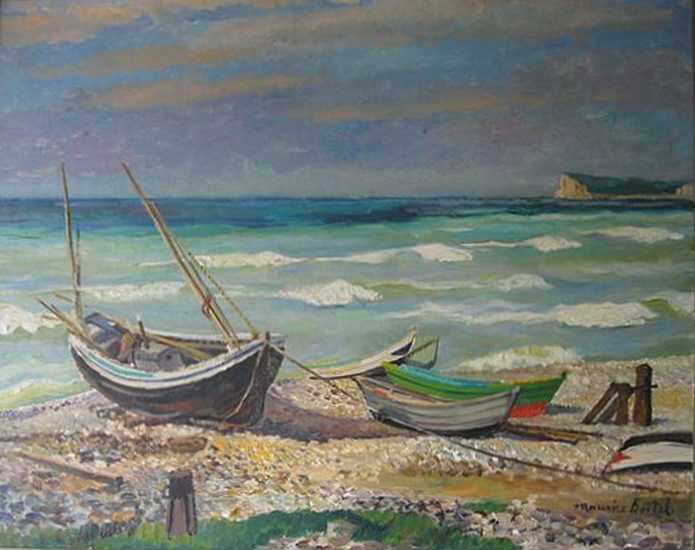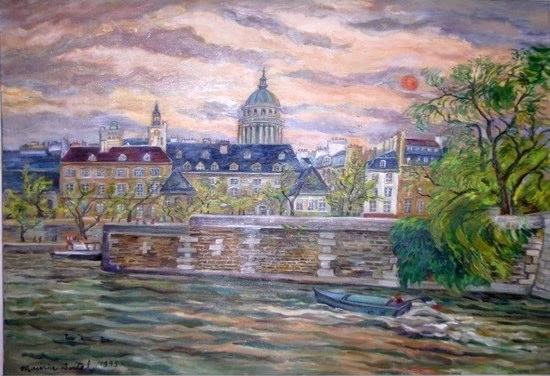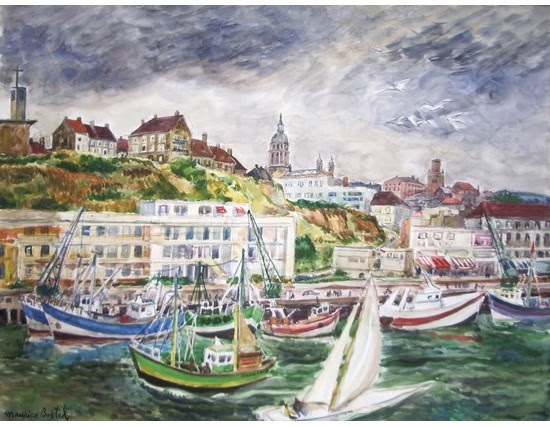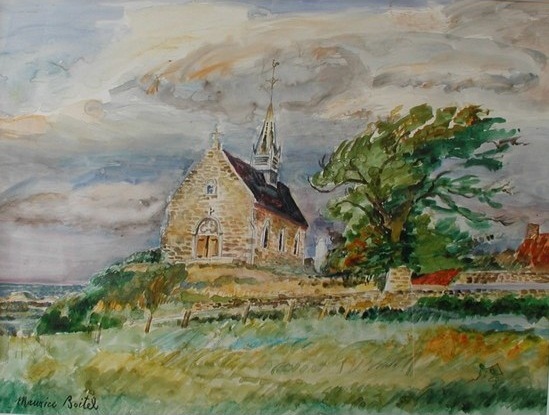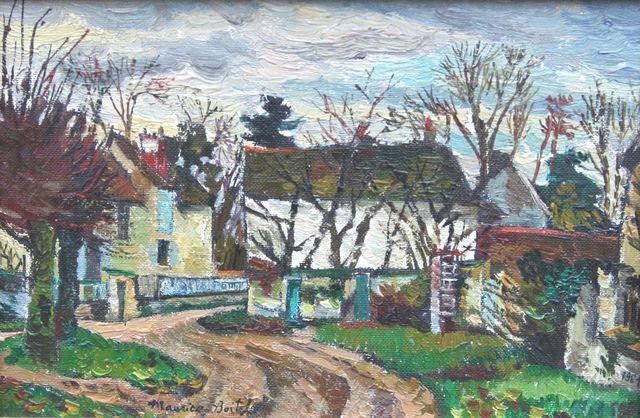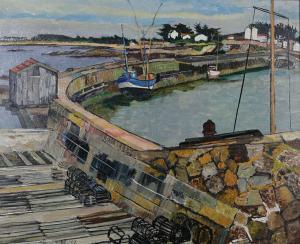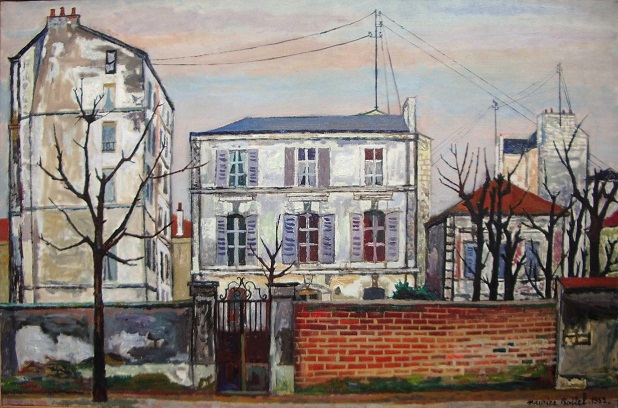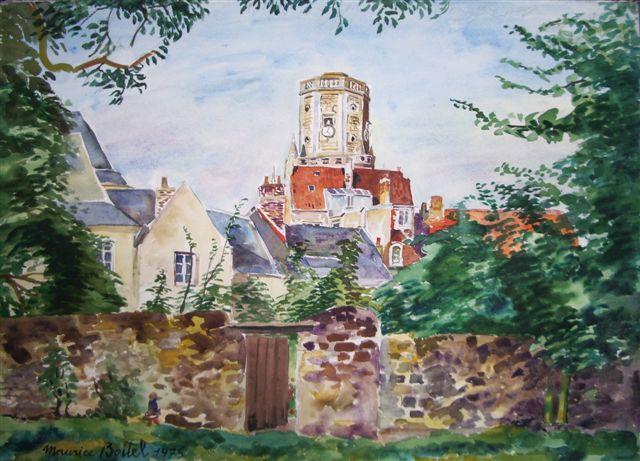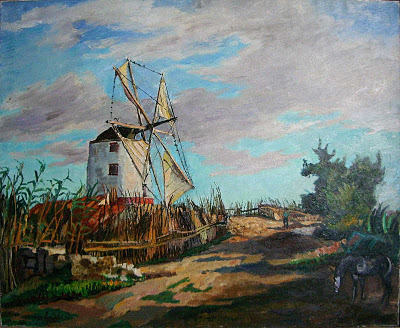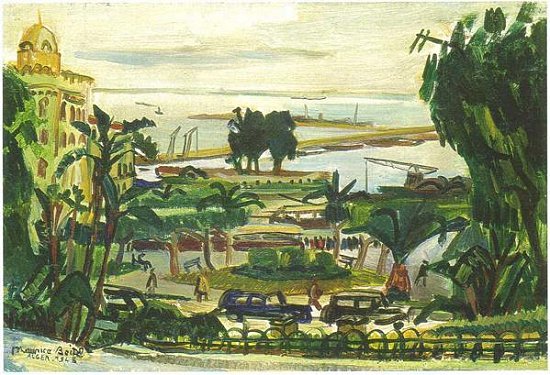<Back to Index>
- Painter Maurice Boitel, 1919
PAGE SPONSOR
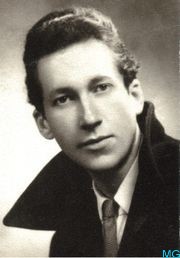
Maurice Boitel (July 31, 1919 – August 11, 2007 in Audresselles (Pas - de - Calais), was a French painter.
Maurice Boitel belonged to the art movement called "La Jeune Peinture" ("Young Picture") of the School of Paris, with painters like Bernard Buffet, Yves Brayer, Jansem, Louis Vuillermoz, Pierre - Henry, Daniel du Janerand, Gaston Sébire, Paul Collomb, Jean Monneret, Jean Joyet and Gaëtan de Rosnay.
Maurice Boitel was born in Tillières - sur - Avre, Eure département, in Normandy, from a Picard lawyer father, a member of the Saint Francis third order, and from a Parisian mother, of Burgundian ancestry. Until the age of twelve Maurice Boitel lived in Burgundy at Gevrey - Chambertin. In this beautiful province his art reflected his major love of nature, and also the feeling of joie de vivre expressed in his works. He began drawing at the age of five.
Maurice Boitel studied at the Fine Arts schools of Boulogne - sur - Mer and of Amiens, cities where his parents lived for a few years. Then his family came back to Burgundy, to Nuits - Saint - Georges. He studied at the Fine Arts Academy of Dijon before fighting in a mountain light infantry platoon at the beginning of World War II.
He successfully sat the competitive examination to enter the National Academy of Fine Arts École nationale supérieure des Beaux - Arts (Paris). In 1942 and 1943, during the most difficult period of the German occupation, in his studio located in the center of Paris he hid Jewish refugees, among them the journalist Henry Jelinek.
A great number of his paintings from between 1942 and 1946 were bought by a British collector and are still in London.
Some of his works may be seen in museums of the following towns: Dijon, St - Maur des fossés, Sceaux, Valence, Algiers, Constantine, Béjaïa in particular and also in the town council hall of Paris and in French embassies around the world.
The painter's evolution continued imperceptibly throughout his life: up to 1946, year of his marriage, expressive painting, very land, then of 1946 to 1952, a very colored painting especially in Algeria. From 1952 to 1965, he carried out very personal paintings: in his landscapes the objects are defined by black contours with some flat tints. During this period, he initially painted close to his home in Paris and Saint - Mandé and also the Cap Gris Nez sober and dark paintings of storms, of boats on the beach, ruins of the war. He also painted characters: clowns, poultry stockbreeders, sailors and portraits. Then, from 1958 to 1965, he painted in Cadaqués (Spain) every summer.
From 1965, his work remained structured but he made contours disappear: he also used more the watercolor in particular in Nice, in Italy and in Sancerrois. Each year, he went close to the Cape Gris - Nez, in Audresselles, or in Ambazac, in the Limousin. The Paris area, where he usually resided also provided him many subjects (Montmartre, the Bois de Vincennes, islands of the Seine river, the Marne, Guermantes and Conches - sur - Gondoire). During the eighties, he tended to evoke an idealized reality.
